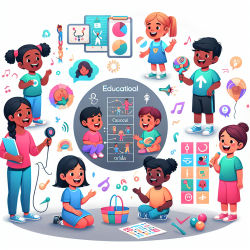Introduction
In the realm of medical technology, the ability to transfer innovations across global economic divides is pivotal. The research article "Conceptual Bases of a Quantitative Method for Assessing the Transferability of Medical Technologies Across the Rich-Poor Divide" provides a novel approach to evaluating this transferability. As practitioners in the field of speech-language pathology, understanding these concepts can enhance our ability to implement effective technologies and advocate for equitable access to care.
The Research at a Glance
The study introduces a quantitative model to assess the transferability of medical technologies by considering a myriad of factors beyond mere economic indicators. By evaluating twelve advanced medical technologies across three economically diverse regions—West Bengal in India, Xinjiang in China, and Montenegro—the research highlights that transferability is influenced by a complex interplay of scientific, technological, infrastructural, socioeconomic, and cultural factors.
Key Findings and Implications
- Beyond GDP: The study found that GDP alone is not a reliable predictor of technology transferability. Instead, a holistic approach considering various factors is necessary.
- Cultural and Infrastructural Influence: Cultural receptiveness and existing infrastructure play significant roles in determining how well a technology can be integrated into a new setting.
- Old vs. New Technologies: While established technologies are more dependable for transfer, newer, innovative technologies with simplistic designs have the potential to bridge economic divides effectively.
Practical Applications for Practitioners
For practitioners in speech-language pathology, this research underscores the importance of considering multiple factors when selecting and implementing technologies. Here are some actionable steps:
- Evaluate Transferability: Use the model to assess the potential success of new technologies in diverse settings.
- Advocate for Simplistic Innovations: Support the development and use of technologies that are not only innovative but also resource-efficient and adaptable.
- Engage in Multidisciplinary Collaboration: Work with professionals from various fields to enhance the adaptability and acceptance of new technologies.
Encouraging Further Research
The study opens the door for further exploration into how we can improve the transferability of medical technologies. Practitioners are encouraged to engage in research that considers the unique cultural and socioeconomic contexts of the populations they serve.
To delve deeper into the original research, please follow this link: Conceptual Bases of a Quantitative Method for Assessing the Transferability of Medical Technologies Across the Rich-Poor Divide.










